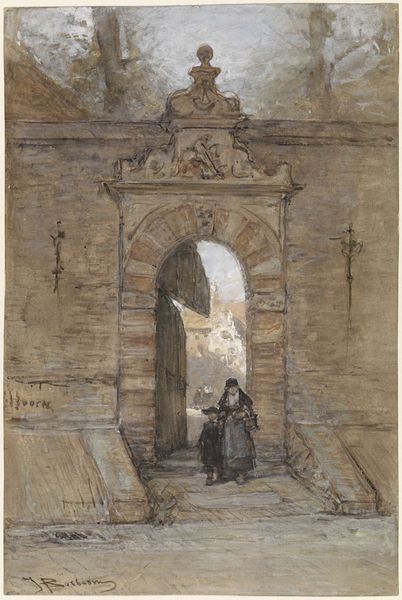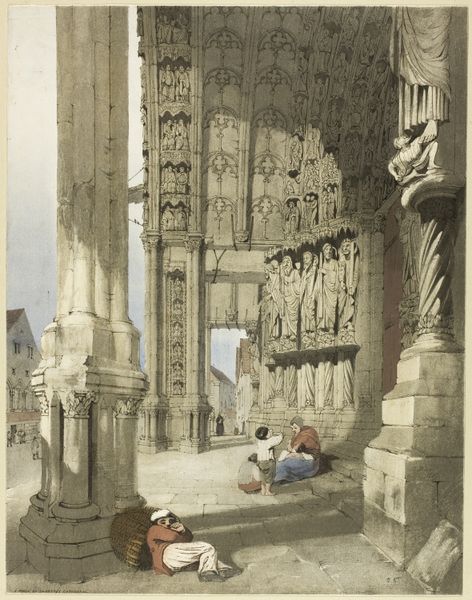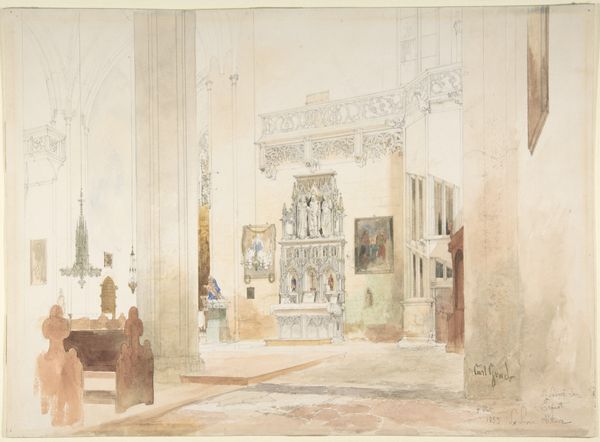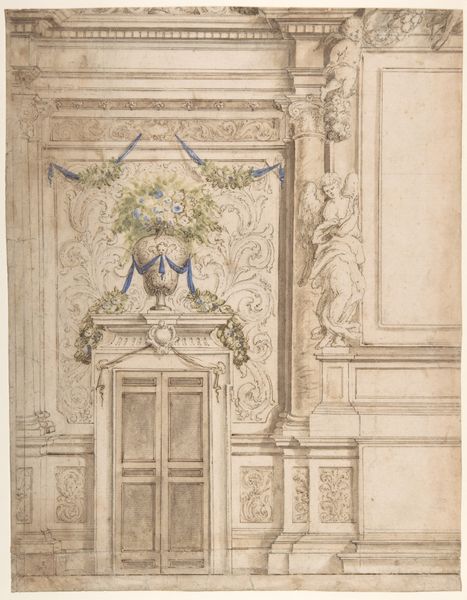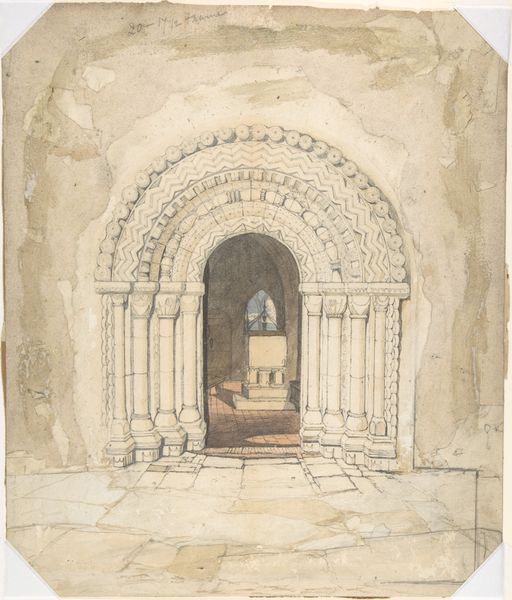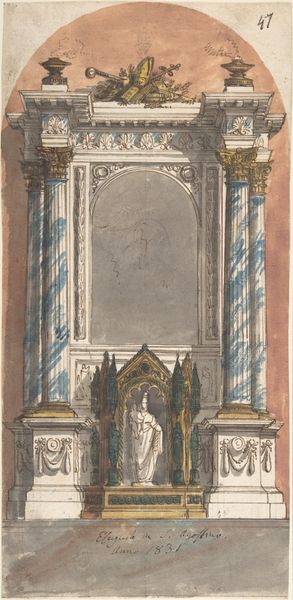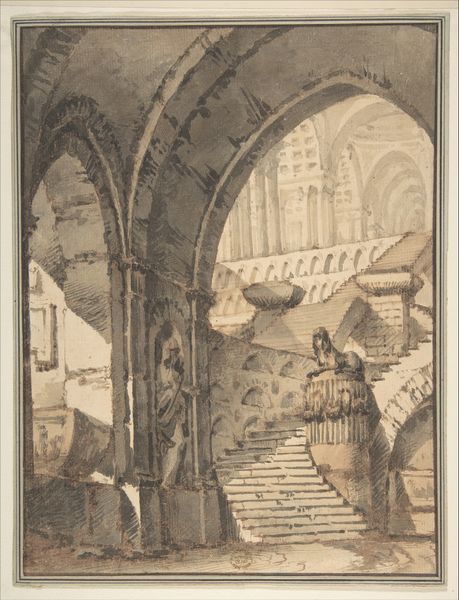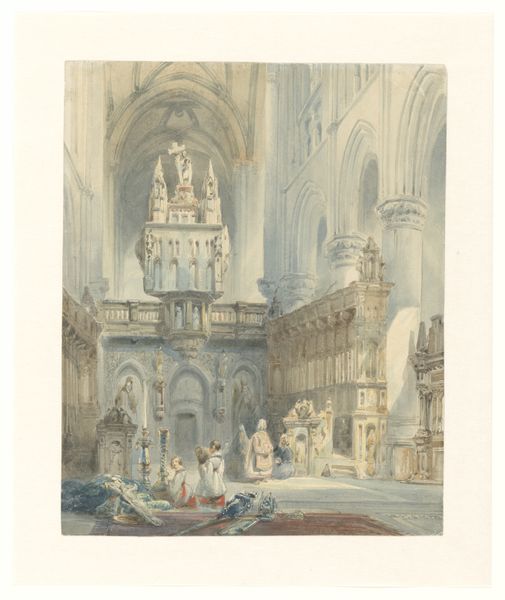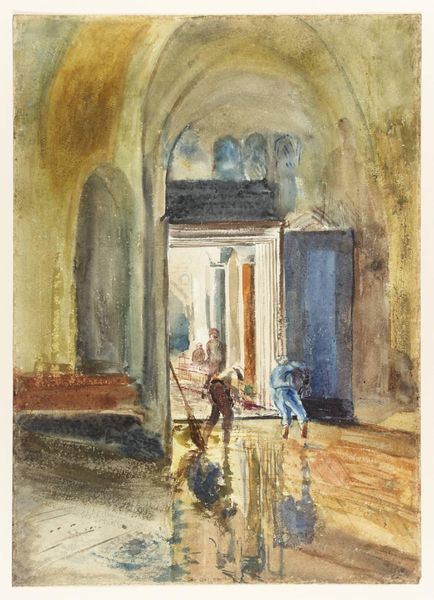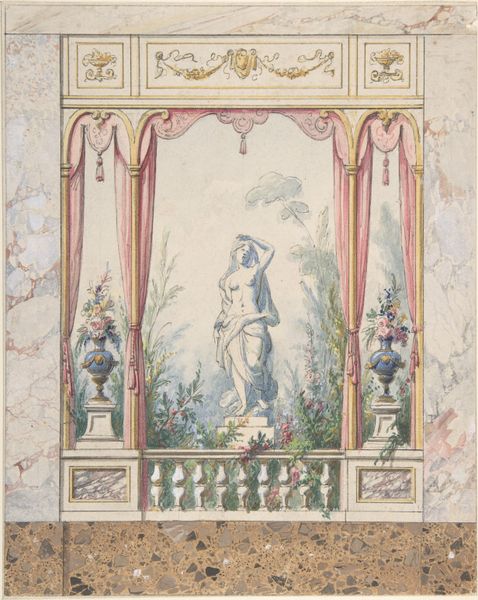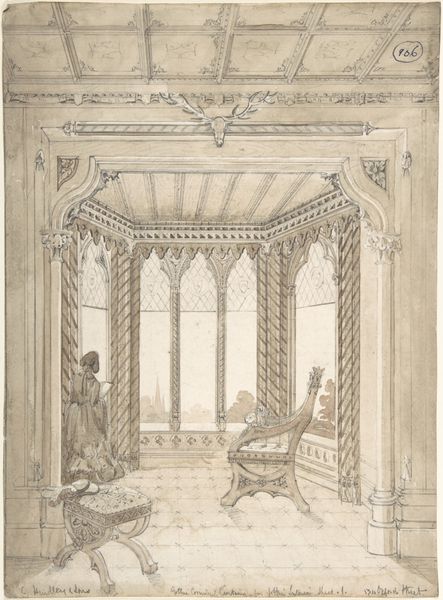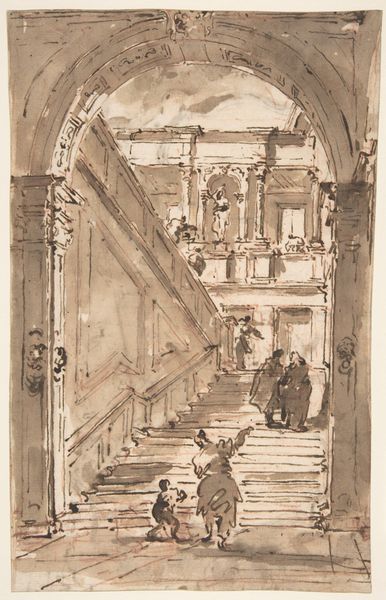
Dimensions: support: 571 x 394 mm
Copyright: CC-BY-NC-ND 4.0 DEED, Photo: Tate
Curator: This is William James Müller's "Sketch for the Frontispiece to the 'Age of Francis I'," currently held at the Tate. Editor: It's a ruin within a ruin, dreamlike and fragmentary. The watercolour almost glows. Curator: Indeed. Note how Müller uses the architectural framework to create a carefully structured composition. The placement directs the eye toward the receding towers. Editor: But then your gaze is drawn back to the tattered flag, slumped like forgotten royalty. Is that intentional, a commentary on history's inevitable decay? Curator: Perhaps. The interplay of light and shadow also emphasizes the formal elements of line and shape, inviting semiotic readings of power, loss, and time. Editor: It's more than just an intellectual exercise, though. This sketch feels deeply personal; a romantic artist’s musing on lost glory, don't you think? Curator: A compelling notion. It's a work that balances structural rigor with emotive suggestion, offering ample space for interpretation. Editor: Exactly. Beauty in ruins; perfect.
Comments
tate 7 months ago
⋮
http://www.tate.org.uk/art/artworks/muller-sketch-for-the-frontispiece-to-the-age-of-francis-i-n02364
Join the conversation
Join millions of artists and users on Artera today and experience the ultimate creative platform.
tate 7 months ago
⋮
This was a sketch for the frontispiece of a volume of illustrations, Müller’s Sketches of the Age of Francis 1st 1841. It shows the architecturally complex rooftop of Chambord, Francis I’s hunting lodge. Many details were changed in the published frontispiece, including the addition of two soldiers in sixteenth-century costume. The raw, direct use of watercolour in this sketch is a departure both from the traditions of antiquarian illustration and the landscape watercolourists’ refined use of washes. It conveys a sense of urgent observation that suited the romanticised vision of the past. Gallery label, September 2004
